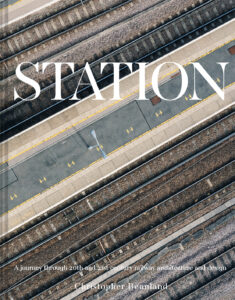The world’s most remarkable train stations
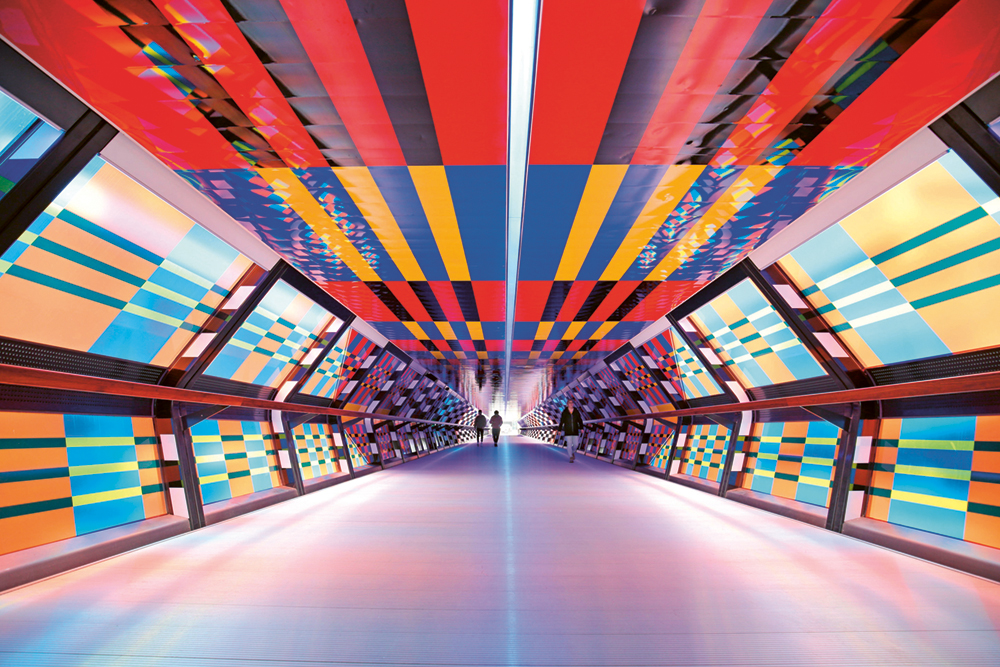
From understated Art Deco glamour and sleek Brutalism to stylish shipping container solutions and riotous Postmodernism, Christopher Beanland takes a tour around 50 of the world’s most remarkable stations in his new book Station: A journey through 20th and 21st century railway architecture and design. Read on to discover five of the best stations.
By Christopher Beanland
ELIZABETH LINE
London (pictured above)
It took longer to finish the Elizabeth Line than it does to finish the Christmas Day washing up. And it came with even more squabbles. It feels like (despite the delays) a Britain doing things right. It’s hard to fault the ambition and the size and space of the stations. It doesn’t feel like a country falling apart – but then it was supposed to be there years and years ago, before Brexit and the wheels coming off. The platforms at Farringdon and Liverpool Street stretch between two Underground stations, and walking the length of them keeps your Fitbit happy. The white colour scheme feels fresh and modern and, combined with the platform-edge doors, it’s pure Star Wars space-age camp. Londoners couldn’t believe that travelling could be so comfortable – our Underground is so old and clattery, this feels like the real deal. It’s how new metro lines in developing cities feel. Knitting regional routes out to Shenfield, Abbey Wood, Reading and Heathrow makes the south-east’s rail system so much more efficient. Though some of us still like to think of it as Crossrail, the project name for a decade.
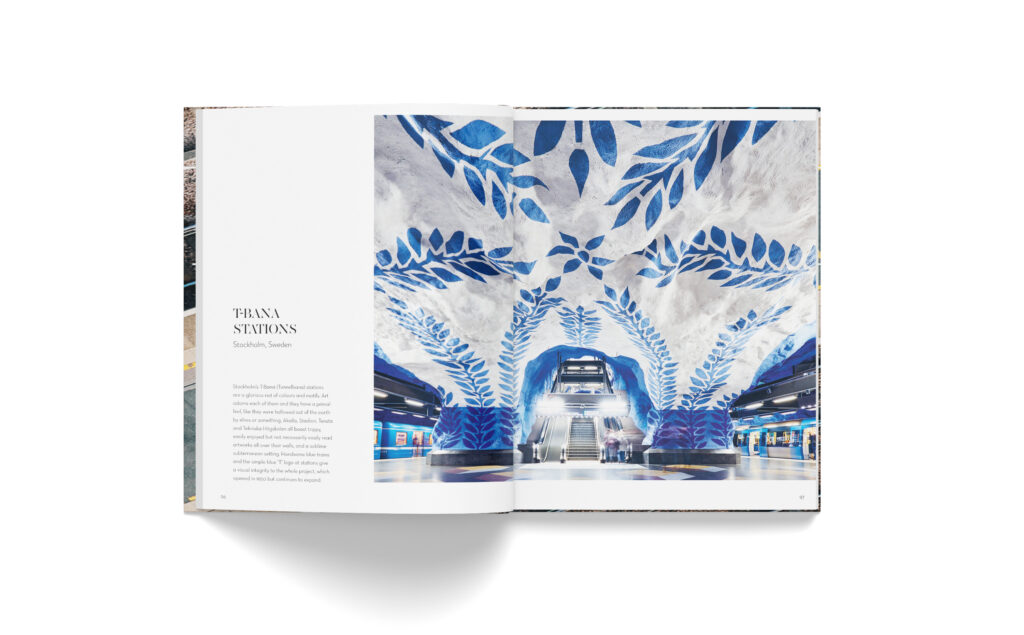
T-BANA STATIONS
Stockholm, Sweden
Stockholm’s T-Bana (Tunnelbana) stations are a glorious riot of colours and motifs. Art adorns each of them and they have a primal feel, like they were hollowed out of the earth by elves or something. Akalla, Stadion, Tensta and Tekniska Högskolan all boast trippy, easily enjoyed but not necessarily easily read artworks all over their walls, and a sublime subterranean setting. Handsome blue trains and the simple blue ‘T’ logo at stations give a visual integrity to the whole project, which opened in 1950 but continues to expand.
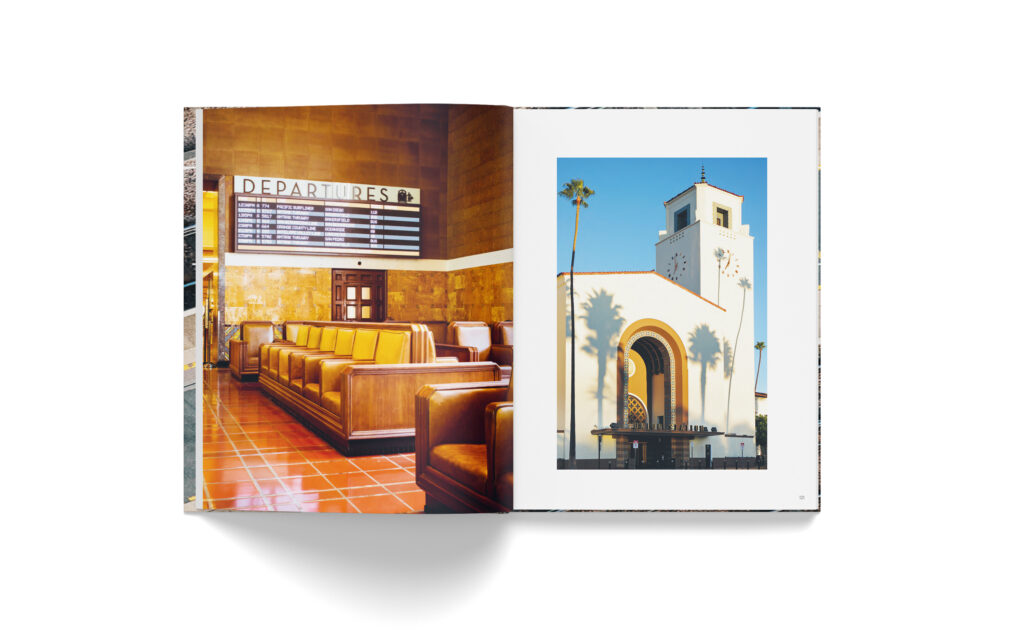
UNION STATION
Los Angeles, USA
It’s Hollywood, baby – why wouldn’t you get a glamorous station? Los Angeles’s main rail terminal is a bubbly exercise in glitz. The unique orange arch you walk through on your way to the Amtrak trains makes it seem like you’re walking onstage at the Oscars. The rows of leather seats are sumptuous. From outside, the Pueblo white façade with palm trees swaying in front is pure So-Cal cool. For so long forgotten, now LA’s new rail renaissance has its heart here on the fringes of Downtown – reminding so many Americans that trains were such an unstoppable power before cars and planes stole their thunder. The idea of taking a train to New York now seems appealing again after years of decline, though that is easier said than done. But train trips around California are possible and LA’s Metro line to Pasadena is not bad – it’s just full of an array of quite colourful characters.
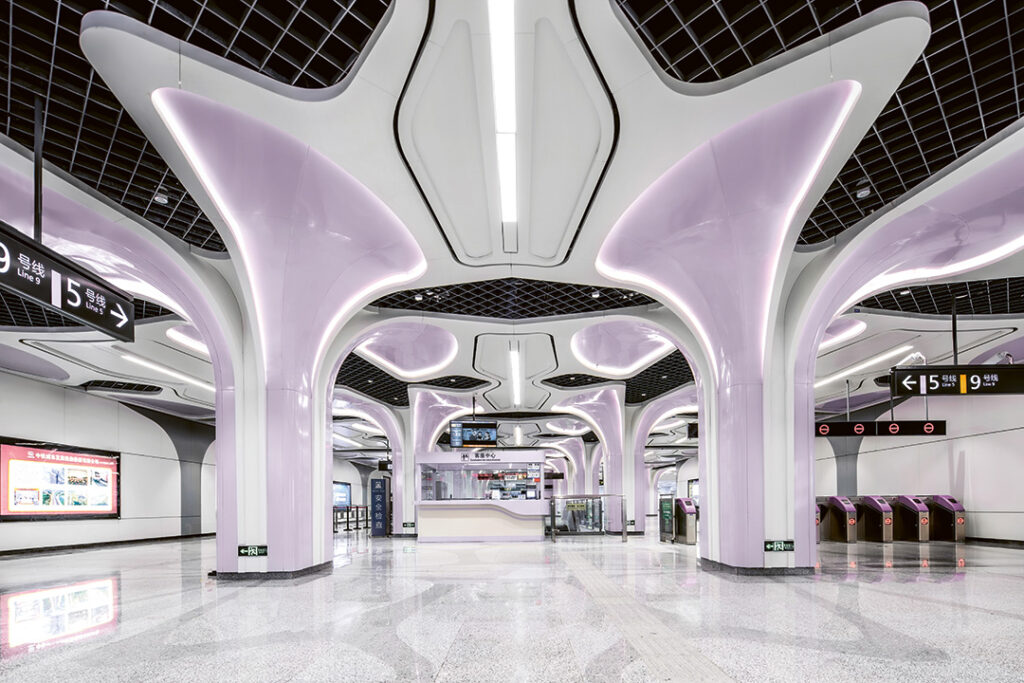
LINE 9
Chengdu, China
Silkworm cocoons and lotus flowers are some of the inspirations for the flashy designs of the new Line 9 stations on the Chengdu Metro. A bright white palette is accentuated by colour coding of individual stations – yellow, green, etc. – in this design by China’s J&A and the UK’s Sepanta. The 22km (13 3⁄4 mile) Metro line stretches through the city of Chengdu and the stations echo the kind of Chinese style of white modernism you can see at Shenzhen Airport and the natural-world-influenced wavy lines epitomized by MAD’s Harbin Opera House.
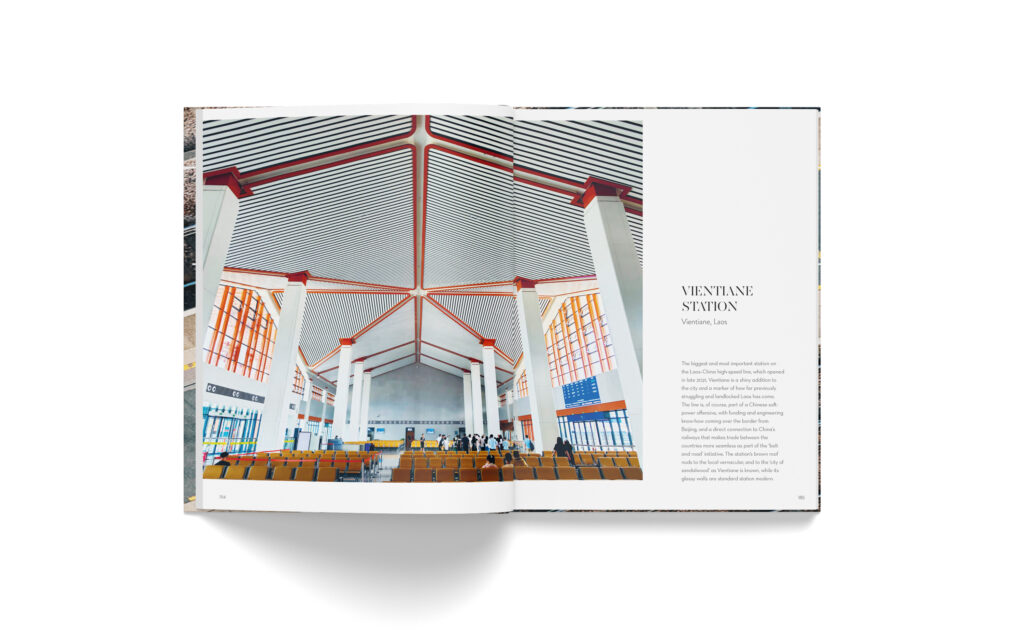
VIENTIANE STATION
Vientiane, Laos
The biggest and most important station on the Laos–China high-speed line, which opened in late 2021, Vientiane is a shiny addition to the city and a marker of how far previously struggling and landlocked Laos has come. The line is, of course, part of a Chinese softpower offensive, with funding and engineering know-how coming over the border from Beijing, and a direct connection to China’s railways that makes trade between the countries more seamless as part of the ‘belt and road’ initiative. The station’s brown roof nods to the local vernacular, and to the ‘city of sandalwood’ as Vientiane is known, while its glassy walls are standard station modern.
Extracted from Station: A journey through 20th and 21st century railway architecture and design by Christopher Beanland. Out now and available to buy from our webshop.
Image credits: Elizabeth Line: Photograph by Simon Turner/Alamy. Line 9: Building by J&A and Sepanta Design/ Photo by CHAPA.

